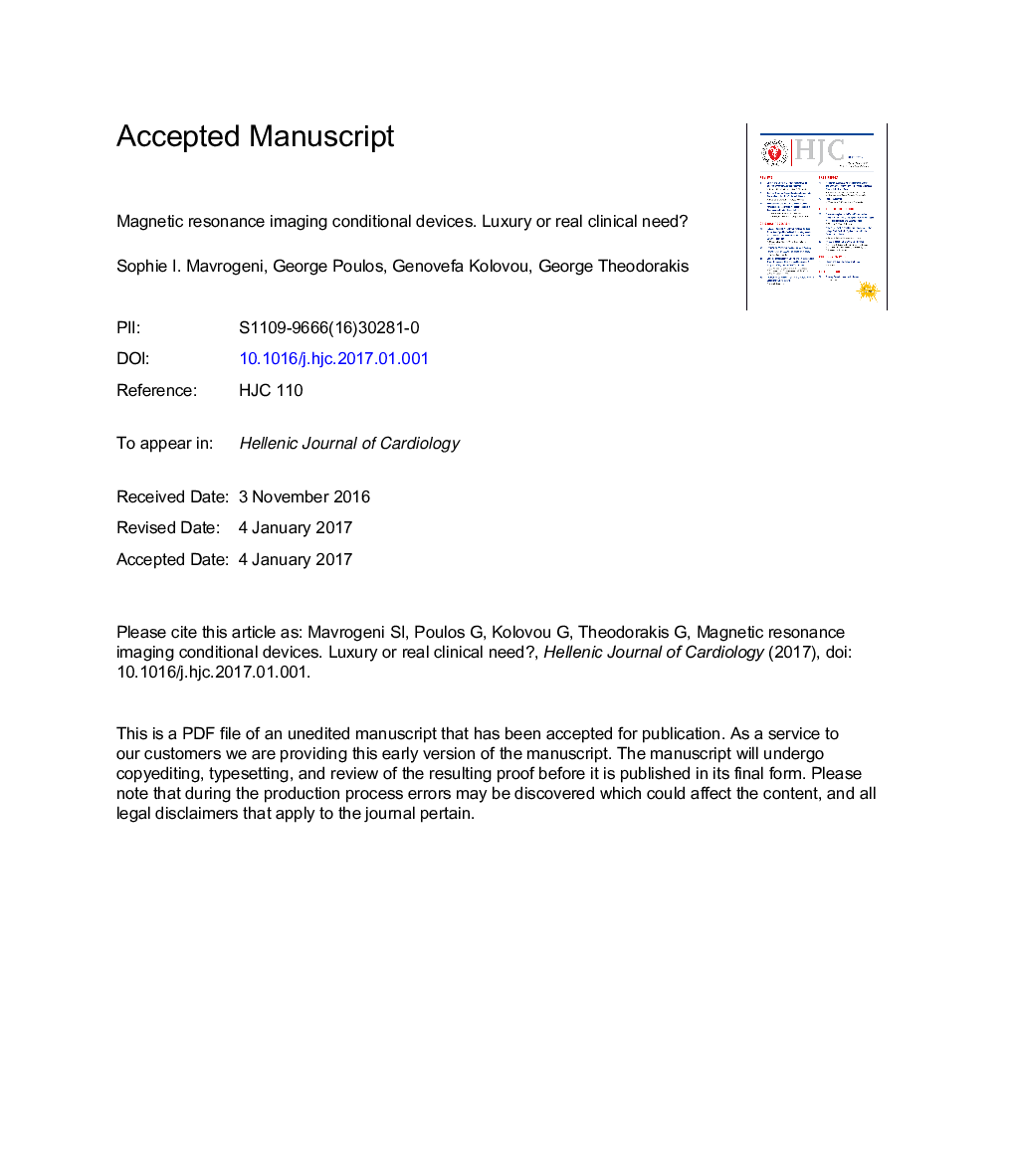| Article ID | Journal | Published Year | Pages | File Type |
|---|---|---|---|---|
| 8660881 | Hellenic Journal of Cardiology | 2017 | 16 Pages |
Abstract
Although the risk of MRI scanning on patients with conventional devices is lower than initially thought, the patient's safety can only be guaranteed when using MRI-conditional devices. The most important modifications in MRI-conditional devices include a) Reduction in ferromagnetic components to reduce magnetic attraction and susceptibility artifacts; b) Replacement of the reed switch by a Hall sensor in order to avoid unpredictable reed switch behavior; c) Lead coil design to minimize lead heating and electrical current induction; d) Filter circuitry to prevent damage to the internal power supply; and e) Dedicated pacemaker programming to prevent inappropriate pacemaker inhibition and competing rhythms. Although many companies claim to have MRI-conditional devices, adoption in clinical practice is limited because a) Not all companies have MRI-conditional devices approved for both 1.5 and 3T; b) Not all companies offer the option of unlimited MRI scanning (without an exclusion zone in the thorax); c) Certain companies allow only a 30-min MRI scanning and only in afebrile patients; and d) Despite having MRI-conditional pacemakers, certain companies do not have MRI-conditional defibrillators and CRT systems. It is clear that this new technology opens the door for MRI to a growing number of patients; however, the widespread adoption of MRI-conditional devices will depend on real-life issues, such as cost, clinical indications for such a device and the permanent education of health care professionals.
Related Topics
Health Sciences
Medicine and Dentistry
Cardiology and Cardiovascular Medicine
Authors
Sophie I. Mavrogeni, George Poulos, Genovefa Kolovou, George Theodorakis,
